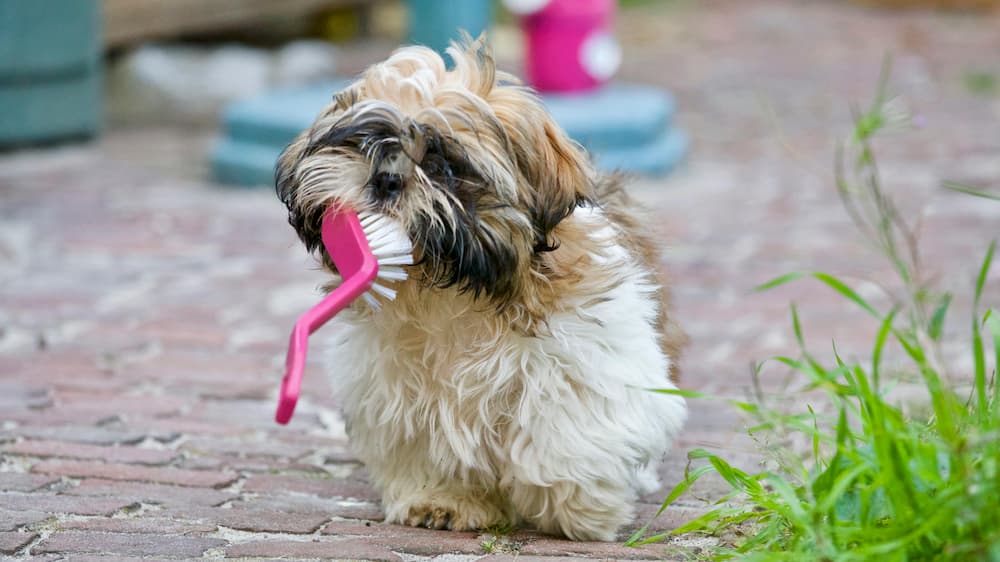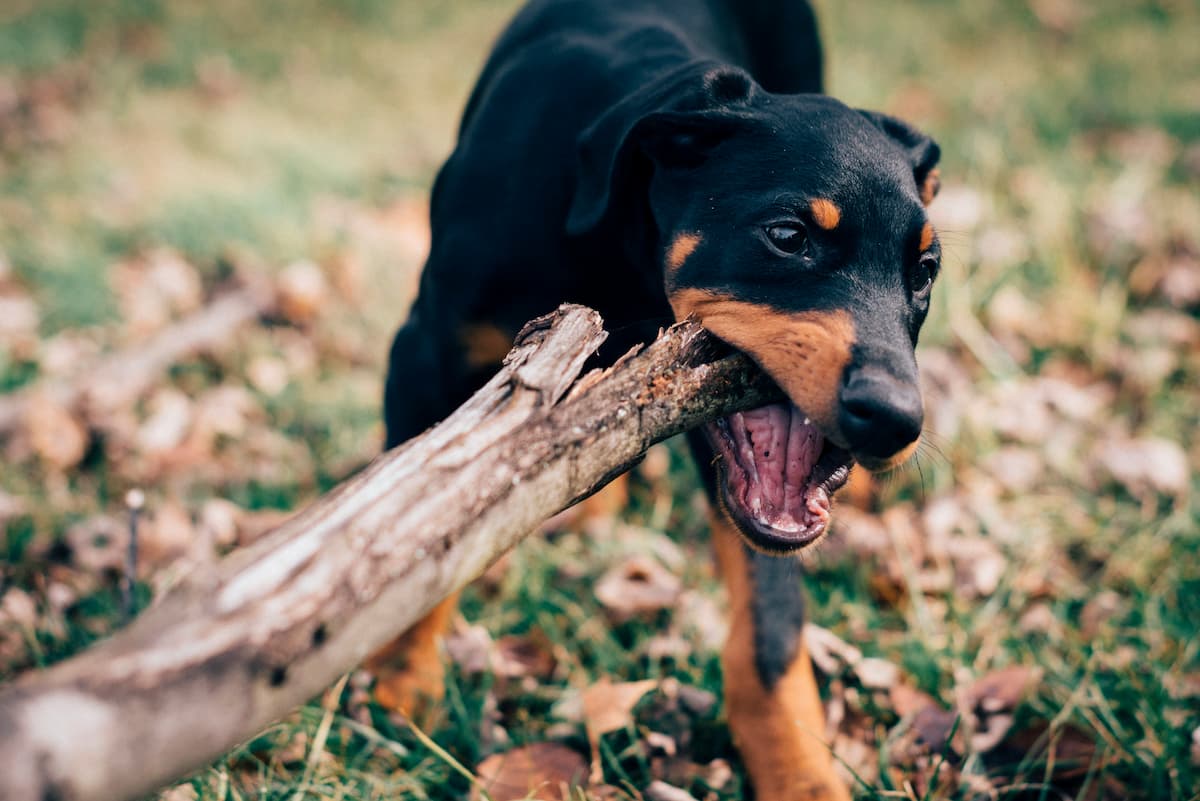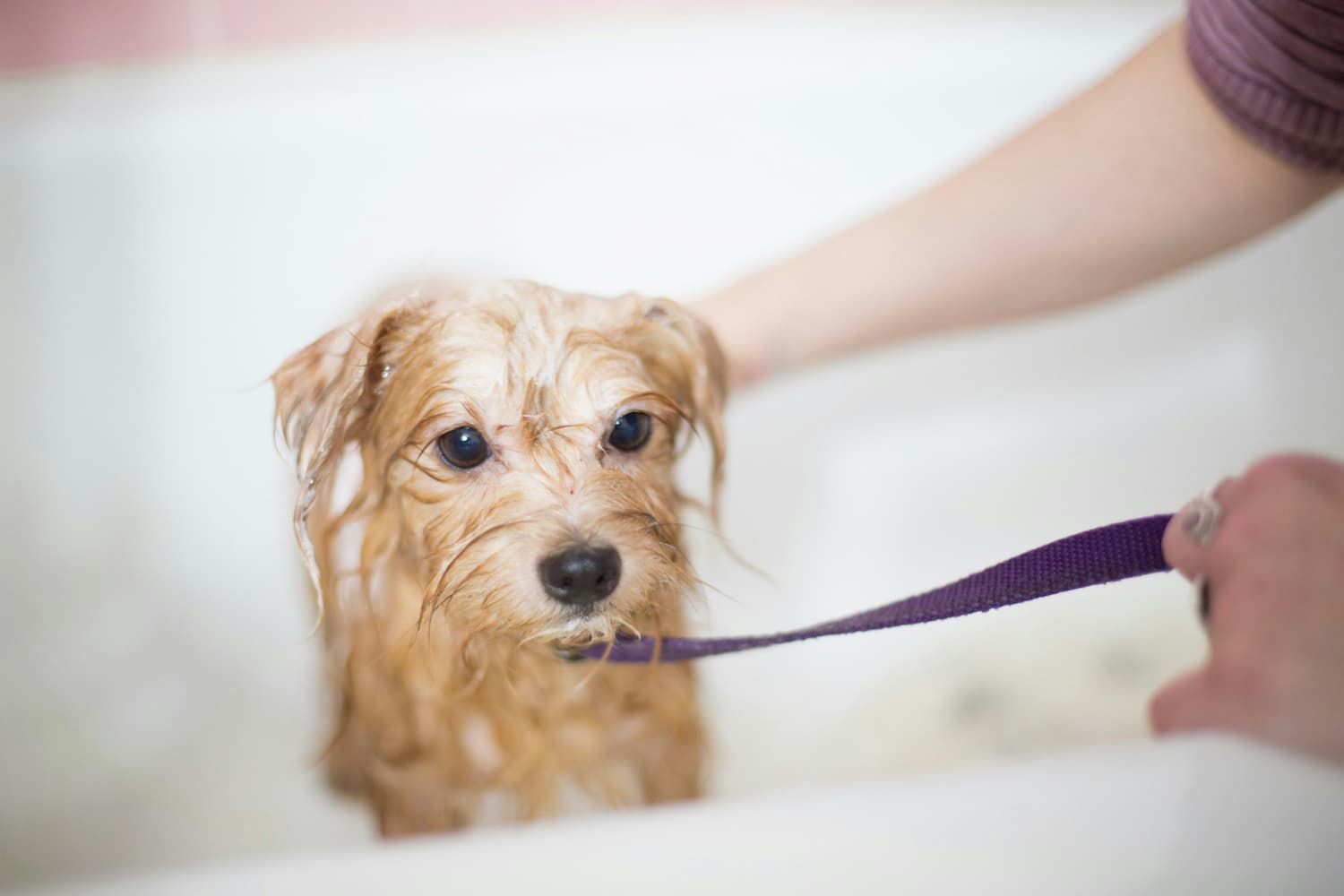Is your dog’s breath starting to smell like old socks? Have you noticed them avoiding hard treats or pawing at their mouth? These could be signs your pup needs dental care—and one of the first questions pet owners ask is, “What’s the dog teeth cleaning cost?” In this guide, we’ll break down everything you need to know about dog dental cleaning costs, from average prices to what influences the bill, so you can keep your furry friend’s smile healthy without breaking the bank.

What is Dental Cleaning for Dogs?
Dog dental cleaning is a professional procedure to remove plaque, tartar, and bacteria from your dog’s teeth and gums, preventing dental disease. Unlike at-home brushing, professional cleanings are typically performed under general anesthesia, The veterinarian uses scaling tools to remove plaque and tartar from above and below the gum line. This deep cleaning is crucial – plaque hidden under the gums can only be removed during a professional cleaning. Vets usually take dental X-rays to check the roots and jaw for hidden issues as well. Because dogs won’t sit still for this work, safe anesthesia is used to allow pain-free cleaning and a complete oral exam. The vet will check each tooth and the gums for signs of gum disease, infections, or loose teeth. In short, a dog’s dental cleaning includes scaling, polishing, an oral exam, and often X-rays – similar to a human dental visit, but done while the pet is sedated so it’s effective and safe.
How Much Does Dog Teeth Cleaning Cost?
The cost of dog teeth cleaning varies greatly. Industry surveys find a basic vet dental cleaning for dogs can start around a few hundred dollars. One study shows an average cleaning runs about $300–$400 in the U.S., though the full range is roughly $136 on the low end to $750 or more for routine cleanings. This base cost usually covers the cleaning itself, exam, and anesthesia. However, if your dog needs extra care, the price can climb. For example, adding dental X-rays or tooth extractions substantially raises the bill. PetMD notes that a standard exam with X-rays and cleaning can cost up to $2,000–$3,000, and adding even 1–2 extractions can push costs toward $1,500 or more.
In practical terms, many dog owners spend a few hundred dollars for a routine cleaning (especially for small, healthy dogs), while larger dogs or those with dental disease can see bills in the high hundreds or thousands. One insurance source notes a typical range is $300–$2,000 for most cases. Always ask your vet for a cost estimate, since location and clinic type also affect pricing.
What’s Included in the Dog Teeth Cleaning Price?
When you pay for a professional dog dental cleaning, you’re generally covering several key items:
- Oral examination: Before cleaning, the vet examines the mouth to identify problem areas. They’ll measure gum pockets, check for loose or broken teeth, and look for oral lesions.
- Pre-anesthetic blood work: Most vets require blood tests before anesthesia to ensure your dog’s liver and kidneys are healthy. This may be included in the cleaning package or billed separately (typically $75–$200).
- Anesthesia and monitoring: Dogs are put under general anesthesia to keep them comfortable and safe. This allows the vet to clean thoroughly without stress for your pet. Anesthesia fees (gas, IV fluids, monitoring) are usually a significant part of the cost.
- Scaling and polishing: Using dental tools, the vet removes all tartar and plaque above and below the gums. After scaling, they polish the teeth to smooth the enamel surface. This step helps prevent future plaque buildup.
- Dental X-rays: Most veterinarians take intraoral X-rays of the teeth and jaw. X-rays reveal hidden issues (like tooth root infections or bone loss) that aren’t visible during the exam. Although X-rays add to the bill, they are considered standard of care for dog cleanings.
- Post-op medications (if needed): If your dog needs pain relief, antibiotics, or special rinses afterward, those costs may be separate.
Some clinics bundle the above in one package, while others itemize each component. Always ask what is included: some “package” deals cover cleaning, exam, anesthesia, and X-rays together, while others might charge extras for each add-on. For example, any needed tooth extractions will increase the bill (often $500–$2,500 per tooth).
What Factors Influence the Dog Teeth Cleaning Cost?
Several factors can affect the price of dog dental cleaning:
- Dog’s size and breed: Larger dogs generally require more anesthesia and longer cleaning time, which raises cost. Conversely, many small breed dogs have crowded teeth and may develop heavy tartar that needs extra work. Flat-faced breeds (e.g. pugs, bulldogs) often have more dental issues and may require more frequent care.
- Dog’s age and health: Older dogs or those with pre-existing health issues may need more pre-care testing or special monitoring. If your pet has kidney or heart problems, the vet might need additional precautions. Also, as dogs age, more teeth may be diseased, requiring extractions or treatments. These add procedures (and cost).
- Severity of dental disease: If your dog has advanced plaque, gingivitis or infections, more intensive cleaning is needed. Removing heavy tartar or diseased tissue takes extra time. Any tooth extractions or advanced procedures (root canals, etc.) will increase the bill significantly. For example, a single extraction can add hundreds of dollars.
- Location: Veterinary fees vary by region. Urban or high-cost-of-living areas (e.g. California, Northeast cities) tend to charge more than rural areas.
- Type of provider: A general practice vet typically charges less than a board-certified veterinary dentist (a specialist). PetMD notes that specialists (AVDC members) may use advanced equipment and have higher fees. Emergency or specialty clinics can also be pricier.
- Vet clinic overhead: High-end clinics or those with advanced imaging tech may have higher fees. Some hospitals include pre-op bloodwork or intraoral X-rays in their standard package, while others charge separately.
- Facility and visit timing: Costs may be higher at emergency clinics or after-hours. Also, some vets require an office visit fee plus the cleaning fee. Always clarify if the quote covers only the dental procedure or also the exam/consultation.
Generally, more complex cases cost more. A healthy young dog who only needs basic cleaning will be on the low end of the range, while an older large dog needing multiple extractions at a specialty clinic could reach the high end.
How to Save on Dog Dental Cleaning?
While dog dental care isn’t cheap, there are ways to reduce the expense without cutting corners on health:
- Prevent with at-home care: Brushing your dog’s teeth regularly (even just a few times a week) slows tartar buildup. Using pet-safe toothpaste and dental chews helps too. Good home care can extend the time between cleanings and reduce how much plaque builds up, saving money in the long run.
- Regular vet checkups: Schedule routine dental checkups (e.g. during annual exams). Catching dental issues early means milder cleanings. Studies show that dogs with regular cleanings are less likely to need expensive surgeries later. Some clinics even do a quick dental check on each annual visit and alert you if it’s time for a cleaning.
- Bundle procedures: If your dog needs other routine care (like vaccines or blood tests), try to combine appointments. Some vets offer a discount if you do vaccinations or tests at the same time as the dental cleaning, since anesthesia and facility use are already scheduled.
- Pet insurance or wellness plans: If you have pet insurance or plan to get it, look for policies with dental coverage or wellness add-ons. These can reimburse a portion of routine dental costs. Even a plan that pays 70–80% of preventive care can save hundreds over your pet’s life. Check the fine print: many insurers exclude pre-existing dental disease, so signing up while your dog is young can lock in coverage for future cleanings. Some local vets offer their own dental discount plans or a monthly wellness membership that includes one cleaning per year.
- Ask about deals: February is National Pet Dental Health Month – many vets run specials or discounts on cleanings during that time. Also inquire about payment plans or third-party financing. Some clinics have sliding scales or lower-cost dental clinics. Shopping around and asking multiple vets can help you find the best value without sacrificing quality.
- Avoid “anesthesia-free” cleanings: It might be tempting to go to a groomer for a cheap, no-sedation cleaning. However, veterinary dental experts (AAHA and AVDC) strongly advise against these for health reasons. Awake cleanings only polish visible tartar and do not treat gum disease below the surface. Cheaper as they are, they can leave hidden infections untreated, costing you more in the long run.
By combining good home care with smart scheduling and insurance, you can often reduce the lifetime cost of dental care. Remember, the goal is prevention – spending a bit on cleaning now can prevent a big vet bill later.
Total Estimated Cost Comparison Table
| Service / Scenario | Estimated Cost (USD) |
| Routine cleaning (small, no issues) | $136 – $376 |
| Standard cleaning + X-rays (avg dog) | ~$300 – $700 |
| Cleaning + 1–2 tooth extractions | $500 – $1,500 |
| Extensive dental surgery (multiple) | $2,000 – $5,000+ |
Estimates will vary by vet, location, and dog’s needs. The lowest costs ($136) are for simple cleanings on healthy dogs; the highest ($3,000–$5,000+) reflect surgeries with X-rays and extractions. Use the table as a rough guide and get quotes from your vet for planning.

Conclusion
Understanding dog teeth cleaning cost helps you take the best care of your pet. In general, professional cleanings may run from a few hundred to a few thousand dollars, but the health benefits are significant. Untreated dental disease is extremely common – about 80% of dogs show periodontal disease by age 2– and can lead to pain, tooth loss, and even kidney or heart problems. In contrast, regular cleanings prevent disease, improve breath and quality of life, and can even reverse early gum issues. While the price tag may seem high, many veterinarians and pet owners agree that the cost is worth it to keep a dog healthy and pain-free. By planning ahead and using preventive care, you can manage the cost of dog dental cleanings and give your dog a lifetime of healthy smiles.
FAQ
How often should my dog get professional teeth cleaning?
This depends on your dog’s age, breed, and oral health. The AVDC recommends most healthy dogs get a professional dental cleaning once a year. Dogs with dental issues (like periodontal disease) or breeds prone to dental problems (e.g., small breeds like Chihuahuas) may need cleanings every 6–9 months.
Does pet insurance usually cover dental cleanings?
Most pet insurance plans do not cover routine preventive cleanings, but they may cover cleanings deemed medically necessary (e.g., to treat an infection). Some plans offer add-ons for preventive care—check with your provider for details.
Is it worth getting your dog’s teeth cleaned?
Absolutely. Untreated dental disease causes pain, difficulty eating, and can lead to infections that spread to the heart, liver, and kidneys. Professional cleanings prevent these issues, improving your dog’s quality of life and reducing long-term vet bills.
What happens if I don’t get my dog’s teeth cleaned?
Over time, plaque hardens into tartar, leading to gingivitis (gum inflammation). Left untreated, this progresses to periodontal disease, where gums pull away from teeth, causing pain, tooth loss, and bacteria entering the bloodstream. This can damage organs and shorten your dog’s lifespan.



